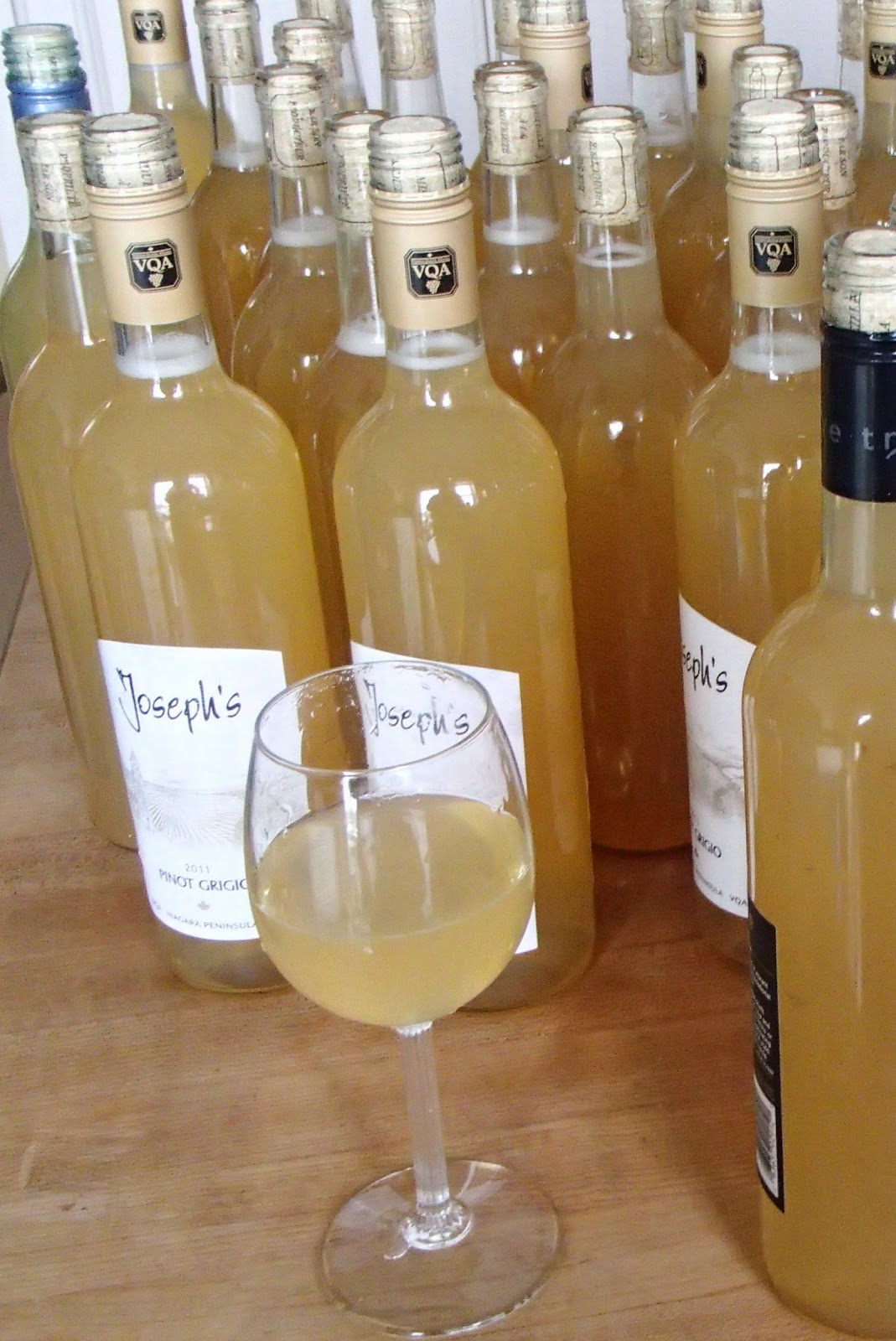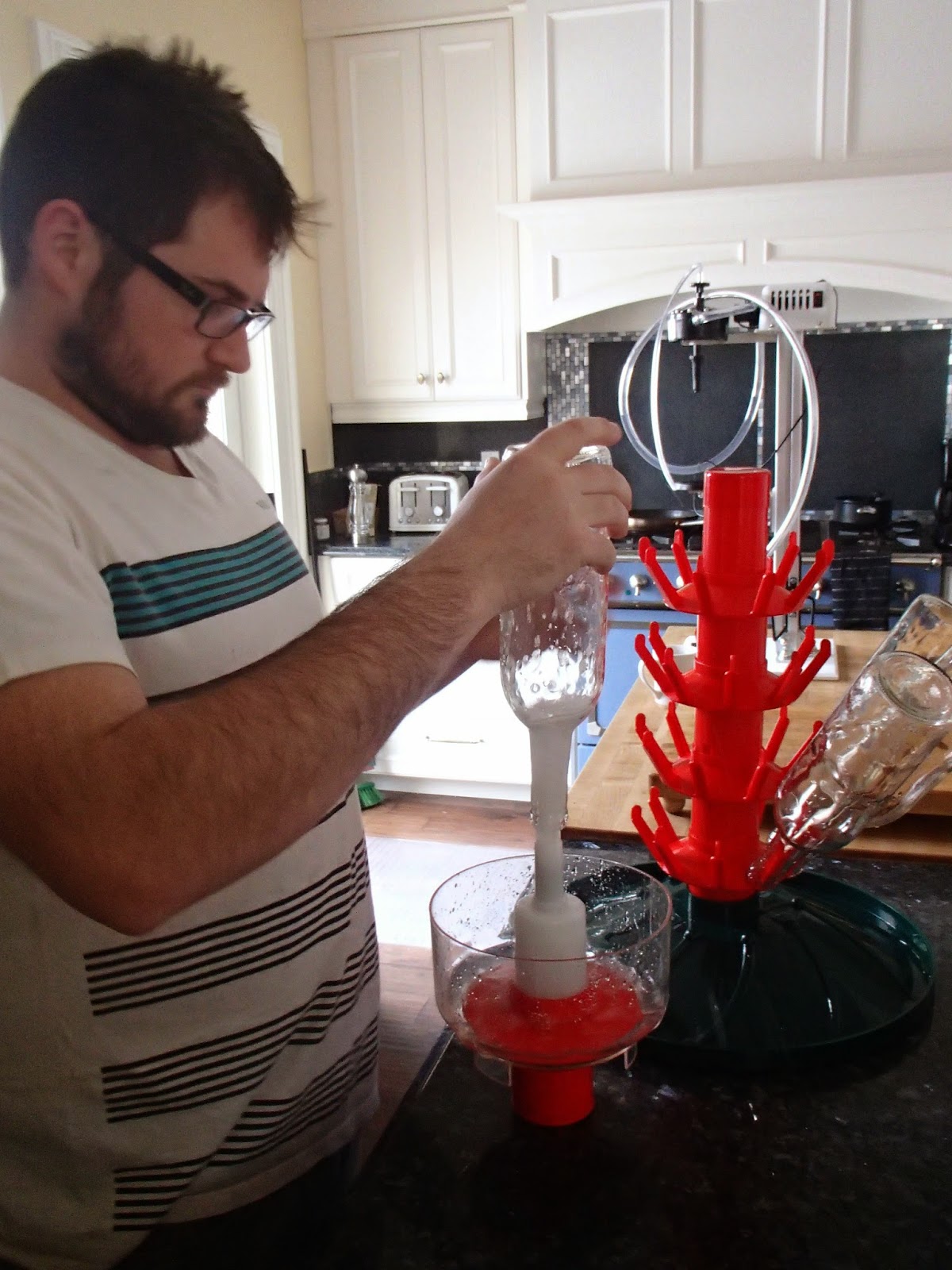To view the latest from Ridge Berry Farm visit our new blog and site!
Followers of the blog will know we have been experimenting with the production of Kiwi wines. Late last year we started the process with portions of our 2014 harvest. As we continue to equip ourselves with better instruments while scaling up our home-based production, we are also trying to tune the many variables involved in this process.
Using our new ferementer, one month ago we transferred our first 2014 batch into secondary fermentation. this week it was time to bottle.
 |
| First batch of Kiwi wine from the 2014 harvest |
When we transferred the brew from the fermenter to the carboys, things were quite promising. We had a strong bouquet of Kiwi and a very sweet wine. we thought another month of fermentation would bring down the sweetness a bit, while clarifying the wine.
Tasting the results this week, we realized two things. First, the wine was not going to clarify very quickly and second, the wine was becoming a little too strong. As a result, we decided to bottle it.
In effect, we probably made a couple of mistakes. The most important is our ratio of honey to Kiwi. What we have today really is a medium to dry Kiwi mead, not really a Kiwi wine. The result is very drinkable, but we feel we can do much better, so this will call for another experiment where we alter our ratios somewhat. In fact, unlike our Raspberry melomel, the late harvest Kiwis are so sweet, we may be able to produce a wine with no honey at all.
In any case, it was time to put some of our new equipment to the test. We washed and sanitized some bottles. Although we bought a batch, we've become great recyclers of wine bottles over the past 6 months (thanks to our August farm wedding, we recovered a good inventory).
 |
| A new pump and spray system with a drying rack really helps the sanitization process. |
We then put our bottle filler to the test for the second time. This piece of equipment has made things significantly easier.
 |
| With our automatic bottle filler we avoid messes and improve efficiency |
The final bit was corking and again our floor based model has proven to be most sturdy.
 |
| Corking our bottles with a sturdy floor based system |
Finally, it was now time to rack the bottles in the cellar and to monitor how this brew ages over time. Meanwhile, we'll work on our "recipe" with another batch.
 |
| Ready for the cellar to see how it ages |
While our Kiwi wine was the highlight of the week, we also continue to work on our Tea Room menu. In the past, one of the more popular items has been our seasonal home made soups. One of the issues here has been our stock. We have used a lot of home made meat based stocks. As a large percentage of our customers tend to be vegetarian, we decided that somehow we would have to produce a vegetable stock as our base.
As we have experimented with this, it turns out that making a hardy vegetable stock with deep flavours is not easy. After a few attempts, we found that the best approach and the real trick is to roast your vegetables prior simmering.
 |
| A new approach to our Tea Room soups: roasted vegetable stocks |
Finally, the art glass gallery postings continue to be generated as rapidly as we can document each piece in the collection. It is difficult to pick our favourite for the week, however for this blog, we've decided to post a Bohemian piece. Circa 1910, this piece was made by Pallme Konig. It is a gorgeous iridescent vase with a pink amethyst base colour and applied vertical threading.
 |
| C. 1910, Pallme Konig vase |
No comments:
Post a Comment